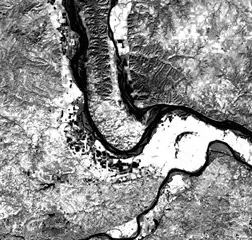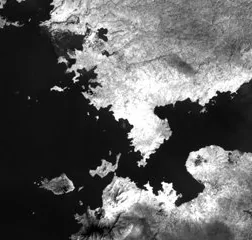Thermal Infrared 1 Band Combination (TIRS1)
Wavelength (micrometers): 10.60 – 11.19
This band aims to provide an accurate land temperature that is given as top of atmosphere surface (calibrated at-sensor) radiance convertible to equivalent brightness temperature. Its use on satellite sensors can significantly contribute to the analysis and measurement of the energy balance characteristics as a complete and essential feature of landscape dynamics and functioning. The band is it’s very effective because it appears in low light and can penetrate in obscurants like haze, smoke, and fogs.
Band Combination Benefits and Usage
This band plays a major role in various requirement which includes spacecraft accommodations environmental testing, detailed performance specifications, reliable testing, among others. It’s however primarily used for the provision of more accurate surface temperature to estimate the soil moisture discrimination, vegetation stress analysis, thermal mapping and many other emerging applications like evapotranspiration rate to measure the for water management.
Thermal Infrared is improving significantly in spatial-spectral and the temporal resolutions. These improvements are assisting in the production of clear pictures of the land. This show as that the high time to synthesize the current field status and show prospects and trends to exploit the new thermal infrared remote sensing application. It’s a good opportunity for discussing the modeling and application of its observation.
Thermal images appear in grayscale where white objects are hot, black objects are cold, and the variation of the two is grey, but can also appear in a colored imagery to assist in the identification of objects at the different temperature. Some materials have reflective or transparent in visual spectrum but are opaque in the thermal spectrum. An example is water and glass.

